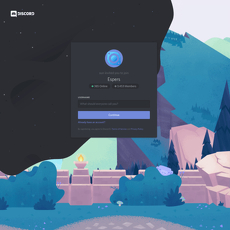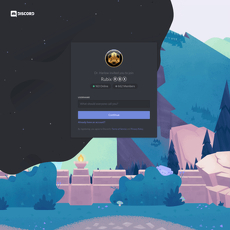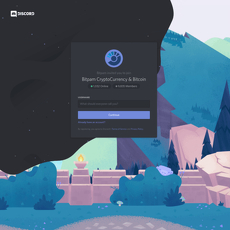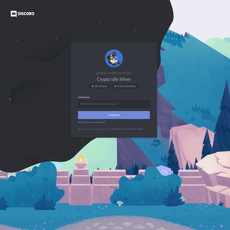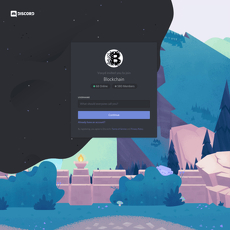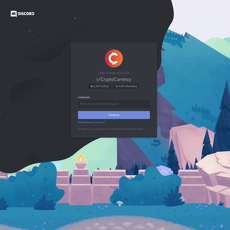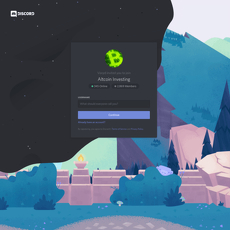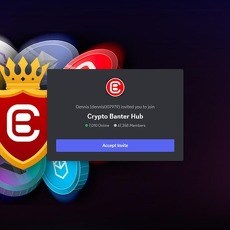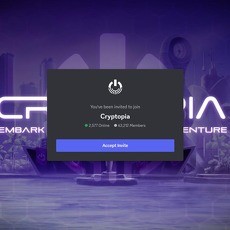Crypto Rand's Group - Trading & Investment Review
Crypto Rand's Group - Trading & Investment
discordapp.com
Crypto Rand’s Group (Discord) Review Guide: No‑Hype Walkthrough, Real Value, and FAQ
Ever open a crypto Discord, get blasted with 47 pings, and still have no idea what to trade—or why? You’re not alone.
Why most crypto Discords feel broken
Most servers overpromise with “can’t-miss” signals and hype-heavy threads. In reality, they create two issues:
- Noise overload: Constant alerts trigger fear of missing out, push you into rushed trades, and make it hard to spot truly high‑quality setups.
- Weak transparency: Wins are posted; losses quietly disappear. You seldom see invalidations, risk plans, or a clear process you can repeat.
If you’re new, this is brutal. You chase entries, learn the wrong lessons, and build bad habits fast. If you’re experienced, you burn time filtering endless charts and “alpha” threads just to extract a nugget of value.
This isn’t just a feeling. Research keeps showing that more activity and more interruptions usually mean worse results:
- Barber & Odean (2000) found frequent trading tends to underperform—overconfidence and hyperactivity are costly.
- Barber, Lee, Liu & Odean (2003) showed most day traders don’t achieve persistent outperformance.
- Gloria Mark et al. (CHI, 2008) documented how interruptions increase stress and reduce quality of decisions—hello alert fatigue.
“In trading, fewer, better decisions beat more, faster decisions.”
So the question is simple: can a crypto group actually help you make fewer, better decisions—without hype?
The angle I’m taking
I’m going to look at Crypto Rand’s Trading & Investment Discord through a practical lens: Is it structured? Is the analysis usable? Can it fit into a clean routine? And can a beginner learn without getting buried?
Think less “signal firehose,” more “education-first workspace.” If that’s what you want, keep reading.
What you’ll get from this guide
- Clear overview of the server: how it’s organized, what content you’ll see, and how moderation keeps quality high.
- Exactly how to use it day to day: where to check market context, chart levels, catalysts, and how to keep a sanity-saving routine.
- Who should join (and who shouldn’t): so you don’t pay for something that doesn’t match your style.
- Alternatives and learning paths: other Discord styles worth checking, plus books and resources if you prefer structured self-education.
- Practical FAQ: beginner steps, risk tips, and expectations—without the fluff.
Here’s what I’m not going to do: promise gains, sell you on “secret alpha,” or tell you to copy trades. Good groups give you context and process; you still need your own plan, risk rules, and patience.
If that sounds fair, let’s make this simple: what exactly is Crypto Rand’s Group, who’s behind it, and how does it work in practice? I’ll show you the setup next—and how to avoid notification hell while you use it.
What is Crypto Rand’s Group and what’s the goal?
If you’re tired of loud rooms and thin analysis, this community will feel different. Crypto Rand’s Trading & Investment Discord is built around one simple mission: education-first trading and investing. That means clear market reads, structured setups, and conversation that helps you think, not copy. You’re here to learn how to read levels, not chase someone else’s entry after the move.
Most traders don’t fail from a lack of charts—they fail from a lack of process. Behavioral finance research has shown for years that impulsive decision-making and herding are expensive habits (see Barber & Odean, 2000). This server counters that with repeatable routines: market context first, levels and invalidations second, execution last.
“Process beats impulse.”
So expect a calm feed that puts BTC/ETH structure and broader risk cues at the center, then branches into altcoin opportunities, macro notes, and practical watchlists. The goal is simple: help you make fewer, better decisions.
Who runs it and how the community works
Crypto Rand is the lead voice and sets the tone: clean charts, clear levels, and no hype. A small moderator team keeps the place tidy and safe—spam gets removed fast, promotion is quarantined, and low-effort “moon” posts don’t last. The culture is quality over noise and you can feel it.
- Roles and channels are structured: analysis up top, education and resources grouped logically, chat threads for deeper questions so key insights don’t get buried.
- Posting standards: if you share a setup, you include at least one of the following—level, trigger, invalidation, and timeframe. No chart? No context? Expect a nudge to improve it.
- Moderation with purpose: harmful DMs are reported and banned. You’ll see reminders like “Admins never DM first” and “Don’t connect wallets from links in chat.”
What “quality over noise” looks like in practice:
- Before: Random “$ALT is about to explode!!!”
- After: “$ALT idea: Break and retest of 0.000123 BTC on 4H, target prior supply at 0.000136, invalidation below 0.000119. Risk: 0.5%.”
This might sound strict, but it’s the point. Studies on online trading chatter (Antweiler & Frank, 2004) show that most public message flow is noise. Tight standards keep signal intact.
What type of content should you expect?
Think of the feed as your daily market map. You’ll typically see:
- Market overviews: quick reads on BTC/ETH structure, dominance, and funding—so you know if it’s a “risk-on” or “wait” day.
- BTC/ETH key levels: ranges, break/retest ideas, invalidations, and higher-timeframe context for swing planners.
- Altcoin setups: clean charts with levels and triggers. Example: “SOL 1D: reclaim 200 EMA + acceptance above 182 = momentum long; invalidation 176.”
- Macro notes: FOMC/CPI dates, liquidity cues, USD/UST yields, and how they might bias crypto risk.
- Risk updates: reminders to size down into high-vol events, or to avoid weekend illiquidity games.
- Watchlists: curated tickers with reasons they’re on the radar. Often includes timeframe and catalyst.
- AMAs/workshops: focused sessions on topics like “invalidations that actually protect you” or “navigating chop without bleeding.” Replays are usually organized so you can catch up.
If you’re short on time, look for recap-style posts or pinned summaries. They cut the scroll and give you the “what changed since yesterday” snapshot. This matters: cognitive load research (Sweller et al.) shows structured summaries help you process information faster and make fewer errors under stress.
Access and onboarding flow
Joining is simple and takes a few minutes. The smarter you set it up on day one, the less noise you’ll have later.
- 1) Join: Use the official invite link: https://discord.gg/rand
- 2) Verify: Complete the Discord verification and any server-specific checks (usually a quick human/anti-bot step).
- 3) Read the rules: It’s short but important—posting standards, DM safety, and how to report issues fast.
- 4) Pick roles: Opt into what you actually want to see—BTC/ETH, alts, macro, alerts, education. Choose conservatively; you can add more later.
- 5) Tune notifications:
- Set server notifications to Mentions Only to avoid alert fatigue.
- Enable channel overrides for just the high-signal rooms you care about (e.g., analysis, summaries, or AMAs).
- Disable DMs from server members to reduce scam attempts.
- 6) Build your flow:
- Create a personal watchlist note (or use the community template) and track a few pairs—not twenty.
- Pin the recap/summary channel so it’s your first read each session.
- Set a calendar reminder for key macro dates mentioned in the server.
- 7) Safety first: No admin will DM you for funds. Don’t connect a wallet from a link in chat. If it looks urgent, it’s probably bait.
Here’s the kind of onboarding win that pays off: I set my roles to BTC/ETH + Macro + Education, turned on alerts only for summaries and analysis, and my daily scroll time dropped by half—yet I missed nothing important. Less noise, better focus.
Curious what the analysis rooms, education hub, and news trackers look like in action—and how to turn them into a 10-minute daily routine that actually sticks? Let’s open the doors next and map the workflow you can copy today.
Inside the Server: Channels, Tools, and Daily Use
Here’s the part everyone asks me about: what you actually see once you join Crypto Rand’s Group and how to use it without getting overwhelmed. Think structured lanes, not chaos. You get clear analysis threads, a calm education corner, a practical alerts stream, a curated news feed, and a community chat that doesn’t drown you in noise.
How I set up my day around it:
- Morning (10–15 min): Check BTC/ETH levels and the daily market overview. Skim the catalyst calendar so nothing blindsides you.
- Midday (5 min): Revisit watchlist threads; see if any ideas matured into confirmed setups.
- Pre-session checks: Before NY or key macro prints, read risk updates and invalidations so you’re not guessing.
- Evening (10 min): Journal one or two decisions. Screenshots, numbers, feelings. It compounds fast.
“Amateurs focus on rewards. Professionals focus on risk.”
Quick pro tip: mute most channels, then enable notifications for your chosen roles and threads. You’ll keep the quality without the ping fatigue.
Analysis and signals: what’s actually provided
The analysis lanes tend to separate two things you should learn to distinguish:
- Ideas: A market read plus a plan. You’ll usually see timeframe (e.g., 4H or 1D), key levels, the trigger, and invalidation (“this idea is wrong if…”). It teaches the why.
- Signals/alerts: Cleaner, faster notes when a plan is close to triggering. Expect entry zone, invalidation, and targets. Still not a “copy-trade.” It’s a prompt to execute your own plan with your own risk.
Typical components I see in good posts:
- Timeframe: 1H, 4H, 1D (avoid mixing signals from different timeframes without a plan).
- Context: Range, trend, or breakout conditions.
- Levels: Entry zones and where the idea fails (hard invalidation).
- If–then rules: “If sweep of support and reclaim, then long to mid-range.”
- Risk note: Suggested risk is conservative on chop days, wider on trend days.
Example format (illustrative):
Pair: BTCUSD (4H)
Plan: Long the sweep of 63,000 if 4H closes back above 63,300
Invalidation: 62,400 4H close
Targets: 65,600 / 66,800
Risk: Max 0.5% account per attempt
Frequency depends on market structure. Trend days = more movement, more actionable alerts. Choppy, event-heavy days = fewer, cleaner notes. That restraint is a feature. Over-activity is statistically costly: Barber and Odean’s classic research found that higher trading frequency tends to reduce net returns after costs. Translation: pick your shots.
Two habits that help you turn analysis into results:
- Pre-commit with a checklist: Checklists reduce error rates in complex tasks (see Gawande’s work on checklists). Mine has five lines: trend, level, trigger, invalidation, size.
- Only use numbers you can actually trade: Your exchange, your slippage, your size. Copying entries blindly breaks risk math.
Education corner: for beginners and intermediates
This is where the server quietly pays for itself if you use it. Expect bite-sized guides, annotated charts, psychology notes, and journaling templates. I treat it like a weekly mini-course:
- TA basics: Support/resistance, trendlines, moving averages, RS/MA confluence, what “structure” means.
- Risk management: Fixed fractional sizing, max daily loss, using invalidation as your out—not your hope.
- Trading psychology: FOMO control, recency bias, loss aversion, how to slow down decisions.
- Journaling: Templates + examples. Screenshots with notes beat “I’ll remember later.” You won’t.
A journal page that actually works:
- Setup name: “4H sweep + reclaim at range low”
- Planned vs executed: Entry, stop, targets (with screenshots)
- Reason to enter: The exact if–then logic
- Emotion check: Calm, rushed, FOMO, revenge
- Outcome + tweak: One sentence you’ll apply next time
There’s real-world backing here: trader self-reviews and rule checklists improve discipline and reduce impulsive trades, which multiple behavioral finance studies tie to better long-term outcomes. Or as Mark Douglas put it, consistency comes from mastering yourself, not the market.
News and catalysts
Smart channel design keeps the signal tight: macro events, on-chain unlocks, listings, and regulatory headlines that actually move price. Use it to write a weekly plan so you’re never surprised.
- Macro prints: FOMC, CPI, NFP. Historically, these trigger elevated intraday volatility in BTC; research outfits like Kaiko have shown consistent spikes post-inflation prints. Set alerts, not bets.
- Unlocks: Track major token unlocks for potential supply pressure.
- Listings: Exchange announcement calendars can precede liquidity shifts.
- Flows and ETFs: If tracked, note net flows as a directional tailwind or headwind, not a trade by itself.
Helpful references to bookmark alongside the channel:
- Federal Reserve policy calendar
- U.S. CPI release schedule (BLS)
- TokenUnlocks and Unlocks Calendar
- Binance announcements (for listings/maintenance)
- Kaiko research on crypto market microstructure
My Sunday routine with this feed:
- Mark the week’s top 3 catalysts on my chart
- Write simple if–then statements: “If CPI > forecast and DXY spikes, then I avoid longs until BTC reclaims X.”
- Pre-size risk lower during high-vol windows
That last line matters. Losses cluster around news when you trade emotions, not levels.
Live sessions, AMAs, and replays
Live calls are where context gets compressed into something you can act on. Format is usually:
- Market walkthrough: BTC/ETH structure, key alt setups, and what invalidates the primary read.
- Q&A: Bring one clear question each: “Here’s my 4H plan and invalidation—what am I missing?”
- Execution notes: Where waiting pays vs where early entries make sense.
Can’t attend? Replays and chart snapshots are typically posted with timestamps. I save my favorites and write three bullet-point takeaways before I place a single trade. That one ritual curbs impulsive entries more than any indicator I’ve tried.
How to get the most from live content:
- Have your chart ready and mark levels as you listen
- Write one action you’ll try this week (e.g., “Cut losers at invalidation instantly—no exceptions”)
- Rewatch the segment that covers your setup style and compare it to your journal
All this structure is great—but here’s the real question you’re probably thinking about: what’s free, what’s paid, and how transparent are results so you can judge the value without FOMO? In the next section, I’ll share the simple checklist I use to spot red flags and make the numbers work for me—want to see it?
Pricing, Transparency, and Risk
Let’s talk money, value, and your safety net. If you’re considering joining Crypto Rand’s Group, the smartest thing you can do is set expectations early: know what you’re paying for, how results are shown, and how you’ll protect your capital while you learn. That’s how you win without FOMO.
Pricing: free vs paid—what actually changes
Most crypto Discords follow a simple pattern: there’s a free door for community chat and broad market context, and a paid tier for structured analysis and closer access. Expect something like this:
- Free access: community channels, high-level market talk, occasional public updates.
- Paid tier (if available): deeper BTC/ETH levels, altcoin watchlists, clearer invalidations, live session access/replays, more frequent market notes, and faster moderation/support.
Pricing can change, so always check inside the server for current tiers and perks. My rule of thumb when judging value:
- Will this save me time every week? Time saved from filtering noise is a real return.
- Will this help me miss fewer bad trades? One avoided mistake can pay for a month.
- Does the content match my timeframe? If you swing trade, 24/7 scalp alerts won’t help.
Tip: if there’s a free tier, hang there first. Get a feel for structure and tone, then upgrade only if you’re actually using the material (watchlists, levels, replays) in your weekly plan.
Performance and past results
No one can guarantee profits. What matters is how ideas are shared and tracked. I look for:
- Clear structure on every idea: entry or area of interest, invalidation/stop, targets, timeframe, date/time stamp.
- Follow-ups: win or loss, posted publicly, with reasoning. No disappearing threads.
- Results in R, not dollars: “+1.5R” beats “+$1,540,” because R scales to your account.
- Consistent invalidations: if there’s no stop, there’s no plan.
What this looks like in practice:
- Example: “BTC long idea at 27,850–27,950; invalidation 27,420; targets 28,300 / 28,600; R:R ≈ 2.1; posted 09:14 UTC.” Later: “Stopped at 27,420, -1R. Reason: failed reclaim of H4 level + DXY bid. Moving to sidelines until structure changes.”
- Example: “OP short from 1.97; invalidation 2.05; partial at 1.89; final at 1.82; +1.8R total. Next: watching for retest failure to reload, otherwise flat.”
Red flags I avoid at all costs:
- Only wins are showcased; losers vanish or get edited.
- Calls with no invalidation, or absurd targets with no timeframe.
- Equity curves that only go up, no drawdowns, no explanations.
- Promises of “guaranteed gains” or “next 100x.”
Reality check: retail traders often underperform. The classic study by Barber and Odean (“Trading Is Hazardous to Your Wealth”) shows frequent trading typically leads to worse returns than the market for many investors. You can read it here: Trading Is Hazardous to Your Wealth. That’s exactly why transparency and a focus on process—not hype—matters.
Risk and personal responsibility
“Don’t focus on making money; focus on protecting what you have.” — Paul Tudor Jones
Markets are risky. That won’t change because you joined a good group. What you control is position size, invalidation, and your rules when things go wrong. A simple foundation that works:
- Risk per trade: 0.5–1% of your account. Not 5%. Not “it’s different this time.”
- Max daily loss: 2–3% and you’re done. Walk. Cool down. Protect your edge.
- Always use a stop: no stop = unlimited downside. That’s not trading; that’s hoping.
- Leverage is gasoline: if you’re new, don’t light it. Even pros get burned.
- Journal: screenshots, reasons, emotions, outcome. Your weekly review is your coach.
If you like numbers, build basic expectancy so your plan fits reality:
Expectancy = (Win% × Avg win in R) − (Loss% × Avg loss in R)
If you win 45% of the time at +1.7R and lose 55% at −1R, your expectancy is 0.45×1.7 − 0.55×1 = +0.215R per trade. That works—if you keep losses at -1R. Remove stops and this math breaks fast.
Want a formal reminder about leverage risk? The CFTC has a straightforward advisory: CFTC: Risks of Leveraged Trading. Worth reading before you press “open.”
Refunds, cancellations, and support
Before you pay for any crypto Discord, protect yourself with a quick checklist:
- Billing cycle: monthly vs annual, renewal date, and how to cancel.
- Refund policy: most digital subscriptions are non-refundable once the period starts. Confirm this before subscribing.
- Trial or free tier: test workflows first; upgrade only if you’re using it.
- Support route: look for a #support or ticket channel; read pinned messages; note response hours/time zones.
- Payment method: choose something that lets you manage recurring charges easily.
Pro tip: take a screenshot of the terms and your receipt. If you ever need to cancel, you know the exact steps and deadlines. If you hit friction, ping moderators politely, open a support ticket, and include your email/receipt—speed matters if a renewal is close.
Bottom line: pricing should be clear, results should be tracked, and your risk should be capped by your rules—not your hopes. Now the real question: is this kind of community actually a fit for you, your timeframe, and your temperament? Let’s sort that out next so you don’t pay for something you’ll never use.
Who This Group Fits (and who it doesn’t)
You can save months by joining a room that actually matches how you trade. This one is built for people who like structure, clear levels, and calm context—not nonstop noise.
“Don’t focus on making money; focus on protecting what you have.” — Paul Tudor Jones
Best fit
If any of these sound like you, you’ll probably feel right at home:
- Beginners who want a guided path — You’re learning support/resistance, trend basics, and how to set invalidations. You want example setups with levels and a quick explanation of the “why,” not blind orders. Example: you’ve got a day job, so you prefer a concise morning read, a weekly plan, and a few quality charts instead of 200 pings.
- Intermediate traders who like clean, higher-timeframe reads — You prefer 4H/D charts, clean ranges, and macro context over 1-minute scalps. Example: you mark BTC/ETH ranges on Sunday, run alerts at key levels, and only take trades that fit your plan.
- Investors who care about structure and catalysts — You want higher-timeframe accumulation zones, supply unlock schedules, listings, and macro notes that frame your DCA or swing positions without hype.
- Risk-first thinkers — You value invalidations and position sizing over “called tops/bottoms.” You’d rather see a setup with a defined stop than a dozen untracked “ALPHA” calls.
- People who journal — You want templates, example breakdowns, and feedback loops that help you improve over time. Consistency > hot streaks.
Small real-world example: Ana trades with a 1% risk cap per trade and waits for 4H confirmations. That single rule cut her overtrading by half and helped her stick to winners. It’s not flashy, but it works.
Maybe not for you
This probably isn’t your scene if you want:
- Guaranteed gains — No such thing. If you need someone to promise profits, that’s a red flag anywhere.
- 24/7 ultra-fast scalps — If you live on 1-minute charts and want constant intraday pings, you’ll find the feed too calm.
- One-click copy trading — The goal here is learning and planning, not outsourcing your entire process.
- Memecoin pumps — If you thrive on impulsive risk and no invalidations, this will feel slow.
- No-stop-loss “YOLO” style — That’s not encouraged here. The focus is capital preservation.
Getting started in crypto trading (beginner steps)
Start simple. Keep your risk tiny. Build habits.
- Learn core basics — Blockchain, wallets, fees, and stablecoins. Good free intros: Coinbase Learn and Binance Academy.
- Pick a reputable exchange and lock it down — Unique email, strong password, 2FA via an authenticator app (or hardware key), withdrawal whitelists. Keep long-term funds in self-custody where possible.
- Start small — Think “practice account.” Risk 0.25%–1% per trade and set a daily loss limit (e.g., 2%). Hit it? Stop for the day.
- Build a simple plan — One or two setups max. For example: “Breakout-retest on 4H” or “Range play with clear invalidation.” Write a checklist you must tick before entering.
- Learn TA basics — Support/resistance, trends, moving averages, RSI/MACD. Focus on reading structure first; indicators are secondary.
- Plan trades, don’t chase alerts — Set alerts at your levels. If price never tags your level with confirmation, skip. No entry is a position.
- Journal every trade — Entry, stop, target, reason, screenshot. Weekly review to find what works. Research in behavioral finance shows overtrading and impulsive decisions hurt returns; writing down rules helps curb that.
Evidence worth knowing: studies like Barber & Odean found that frequent traders often earn less than those who trade selectively. A slow, planned approach can be a competitive edge.
Making crypto trading more profitable (mindset and tactics)
- Risk first, profit second — Define invalidation before entry. If you risk 1% on a $10,000 account and your stop is 2% away, your position size is $100 ÷ 0.02 = $5,000.
- Diversify across timeframes — Example: one higher-timeframe swing strategy plus a simple DCA plan for long-term holdings. Don’t force intraday trades if swing conditions aren’t there.
- Let the market come to you — Pre-mark levels on weekend, set alerts, and wait. FOMO fades when your plan is written down.
- Respect catalysts, then wait for confirmation — CPI, FOMC, unlocks, listings. Idea: no new trades 15 minutes before/after big events unless your plan accounts for volatility.
- Know your expectancy — A system with a 40% win rate and 2.5R average winner is profitable. You don’t need 80% winners—just solid R:R and discipline.
- Fight overtrading with rules — Two-trade daily cap, 20-minute cool-off after a loss, and no revenge trades. Overactivity is a known performance drag.
- Journal to improve — Weekly review: What setup paid? What time of day hurts performance? Cut one mistake each week. Tiny edges compound.
- Kill “always in” mindset — Flat is a position. If the setup isn’t there, conserve focus and capital for when it is.
Quick scenario: Liam trades the 4H trend. BTC breaks a range high on a news pop. Instead of chasing, he waits for the retest into support with a tight invalidation. Price fakes out and dumps—no trade taken, zero damage. The best trade of the day was restraint.
So, if you like structured analysis, clear invalidations, and a calmer feed, you’ll likely feel aligned here. But what if you’re comparing it to other crypto Discords with different strengths—NFTs, quant tools, or DeFi research? Which one actually complements your style best? Keep reading; I’ll stack this group next to the popular alternatives and point out where each one shines.
How It Compares: Other Crypto Discords and Extra Learning
When people ask me how Crypto Rand’s Group stacks up against the rest, I think in use-cases, not hype. Rand’s edge is a structured, education-first feed that gives you market context, clean levels, and a place to practice planning your own trades. If your priority is learning to think like a trader rather than copying calls, this format saves you from the chaos that dominates many big public servers.
That said, there are areas where other Discord styles shine:
- NFT-centric servers: If you want mint calendars, whitelist chatter, and real-time mint sentiment, dedicated NFT rooms will be faster. Rand’s group covers majors and catalysts, but hardcore NFT flipping lives elsewhere.
- DeFi research hubs: Protocol breakdowns, governance votes, tokenomics audits, and yield strategies are deeper in research-first communities. If you spend more time on-chain than on charts, a DeFi-focused group might be a better primary home.
- Quant/data rooms: Some servers lean into backtested systems, order flow, options flow, and on-chain metrics dashboards. If you prefer models and statistics to discretionary TA, you’ll feel at home there.
- High-frequency signal feeds: For 24/7 scalps, automation, and constant alerts, you’ll find specialized groups that prioritize volume of calls. Just know the trade-off: more noise, more impulse, more fatigue.
- Massive open communities: Great for sentiment, memes, and news velocity. But moderation quality varies wildly, and “alpha” threads can bury you in conflicting takes.
Quick reality check: Academic work on overtrading and herding (e.g., Barber & Odean; various market microstructure studies) consistently shows that chasing crowded signals and trading too frequently tends to hurt returns. In plain English: fewer, better-planned trades usually beat constant alerts.
That’s why I rate Rand’s Group as a calm “home base.” Use it for your plan and context. Supplement with niche servers for your specialty—NFTs, DeFi, or quant—so you don’t turn your screen into a siren of distractions.
Alternatives worth checking
If you’re building a smart stack of communities, mix one primary education hub with one niche specialist. Here’s how I’d frame the options and what to verify before joining:
- Large open communities (sentiment and speed):
- Best for: Newsy flow, quick polls on market mood, tracking hype cycles.
- Check for: Strict moderation, scam link filters, and pinned “start here” guides. Without these, signal-to-noise collapses.
- Indicator/signal-centric groups (system-driven):
- Best for: Traders testing specific indicators or rule-based entries.
- Check for: Clear invalidations on every idea, backtests with sample sizes, and a changelog when rules evolve. Beware cherry-picked screenshots.
- Research-first hubs (DeFi, tokenomics, governance):
- Best for: Long-form notes, sector theses, protocol watchlists.
- Check for: Source links, conflict-of-interest disclosures, and post-mortems on calls that didn’t work.
- NFT-focused studios (mints and trading):
- Best for: Mint calendars, on-chain mint tracking, creator Q&As.
- Check for: Verified links, anti-raffle spam measures, and honest floor-tracking—not just victories.
- Quant/data rooms (order flow, options, on-chain):
- Best for: Model-based signals, volatility views, whale tracking.
- Check for: Method transparency, assumptions, and whether signals include context (trend regime, liquidity) to avoid blind following.
- Invite-only circles (tight curation):
- Best for: Consistent signal quality, low noise, strong accountability.
- Check for: Trial windows, archived idea tracking, respectful culture. You’re paying for curation—make sure it exists.
Why this matters: Studies on interruption and decision quality (e.g., HCI research on alert fatigue) show that constant pings degrade judgment. The right Discord isn’t the loudest one—it’s the one that helps you stick to a deliberate process.
If you compare all of that to Crypto Rand’s Group, the value prop is clear: structured market read, clean levels on majors and alts, and education that trains your own eye. Pair it with one niche server if you need specialty depth; that combo covers most traders without overwhelming them.
Books and learning paths to master investing
Books won’t make you money by themselves, but they compress years of mistakes. I like this simple track many community members have used successfully:
- The Basics of Bitcoins and Blockchains — Understand the plumbing: keys, wallets, nodes, mining, consensus. It kills a lot of confusion.
- Cryptoassets — Frameworks for valuing different token types and thinking in portfolios rather than single bets.
- Digital Gold — A narrative history that helps you see why Bitcoin behaves the way it does in cycles.
- The Truth Machine — Broader view of blockchain’s promise and limits, useful for filtering hype from real utility.
Turn reading into an edge by pairing it with a 30-day practice loop:
- Pick one timeframe to specialize in (e.g., 4H or 1D).
- Use only two indicators max (e.g., MA + RSI) and focus on levels.
- For every idea you see in Discord, write your own plan: entry, invalidation, target, position size.
- Journal the outcome and a short “what I learned” note. Review weekly.
Coaching insight: Performance psychologists (think Brett Steenbarger and similar voices) hammer this home—structured review beats raw screen time. The journal, not the alert, is what compounds.
Want a shortcut to choosing the “right” server for you—and a straight answer on which one I’d join first with a fresh account and $0 sunk cost? That’s exactly what I’m covering next…
FAQ + Final Verdict
Who has the best crypto Discord?
“Best” depends on your goal. If you want structured trading education, clean levels, and a calmer stream of ideas, Crypto Rand’s Trading & Investment Discord is a strong fit. If you want fast social chatter or NFT-heavy content, you’ll probably enjoy larger general servers more.
Here’s how I judge any group fast:
- Moderation quality: clear rules, low spam, respectful debate.
- Transparency: ideas include invalidations and are tracked, not hidden after the fact.
- Consistency: a steady cadence of market context over hype.
- Fit to your style: higher timeframes vs. scalping, spot vs. leverage, education vs. signals.
Simple test: join for a week, mute non-critical channels, and track “actionable notes” you actually use. If you can convert ideas into planned trades (with invalidations) and feel less anxious, you found the right room.
How to be a crypto trader for beginners?
Keep it simple and protective:
- Secure first: reputable exchange, strong passwords, 2FA, and a small starting bankroll.
- Risk rule: risk 0.5%–1% per trade, max daily loss 2%, then stop.
- Plan before you click: levels, entry, invalidation, targets, position size.
- Journal: record the setup, why you took it, and how you felt. Review weekly.
- No leverage until your journal shows you can follow rules for at least a month.
Research backs this up: Barber & Odean (2000) showed that retail traders who trade more tend to earn less because of overconfidence and costs. A simple plan and fewer, better trades beat chasing every move.
First-week routine sample:
- Pick 2 pairs (e.g., BTC, ETH). Mark support/resistance. Set alerts.
- Wait for your level. If price isn’t there, do nothing.
- Take at most 3 trades for the week. Journal each one.
- On Sunday, review what worked and what was noise.
How to make profit with crypto trading?
Focus on risk, not win rate. Many profitable traders win ~40–55% but keep losses small and winners larger. That’s it.
Example plan (ETH):
- Context: ETH rejected at 3,000 multiple times. Plan only if it reclaims and holds.
- Trigger: 4H close above 3,000, alert at 2,985 for a retest.
- Entry: 2,985–2,995 on retest. Invalidation: 2,940 (back inside the range).
- Risk: 1% of account. Targets: 3,120 first, 3,260 second. Move stop to breakeven after first target.
This creates an asymmetry: small predefined loss if wrong, multiple R if right.
Use catalysts, don’t chase them: CPI, FOMC, token unlocks, listings—note the time, let the first reaction play out, then trade the retest if it aligns with your levels. Impulse trades during headlines are where many blow up.
Edge compounds when you do the same right thing repeatedly—tight risk, good levels, patient entries, honest reviews.
How to master crypto investing with books?
Pick one great primer, then one that builds valuation thinking:
- The Basics of Bitcoins and Blockchains — clear fundamentals and terminology.
- Cryptoassets by Burniske & Tatar — frameworks for valuing networks and portfolios.
Pair reading with action:
- After each chapter, pick one asset and outline its tokenomics, issuance, and real demand.
- Set a simple DCA plan for your long-term basket and track it monthly.
- Revisit your thesis quarterly—what changed on-chain, in dev activity, or in adoption?
Long-term investors tend to outperform when they stick to rules and review on a schedule, not on emotions. That’s the same story across markets, not just crypto.
Is Crypto Rand’s Group worth it?
If you value structured analysis, clear invalidations, and an education-first culture, yes—it can be worth it. If you want 24/7 scalp calls or guarantees, you’ll be disappointed.
30-day reality check:
- Track how many ideas turned into planned trades with proper risk.
- Record your total R gained/lost, not just PnL.
- Note time saved and lessons learned (screenshots help).
- If your journal improves and anxiety drops, you’ve got value. If not, cancel and move on.
You can join here: https://discord.gg/rand. Set notifications wisely so you avoid alert fatigue.
Conclusion
My take: Crypto Rand’s Trading & Investment Discord is a smart pick for traders and investors who want steady market context, clean technical levels, and a community that rewards patience over noise. Join, mute the fluff, build a simple routine, and let your journal make the verdict. If you keep risk tight and expectations grounded, groups like this can shorten your learning curve—without the chaos.
CryptoLinks.com does not endorse, promote, or associate with Discord servers that offer or imply unrealistic returns through potentially unethical practices. Our mission remains to guide the community toward safe, informed, and ethical participation in the cryptocurrency space. We urge our readers and the wider crypto community to remain vigilant, to conduct thorough research, and to always consider the broader implications of their investment choices.


